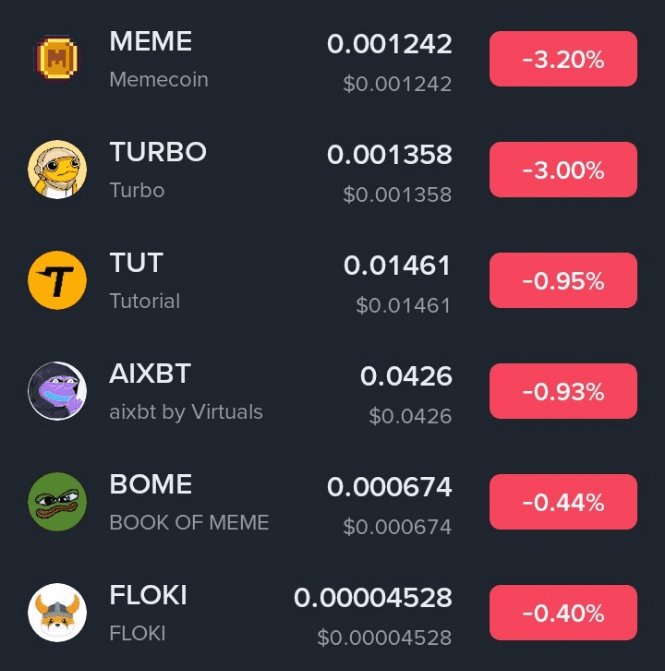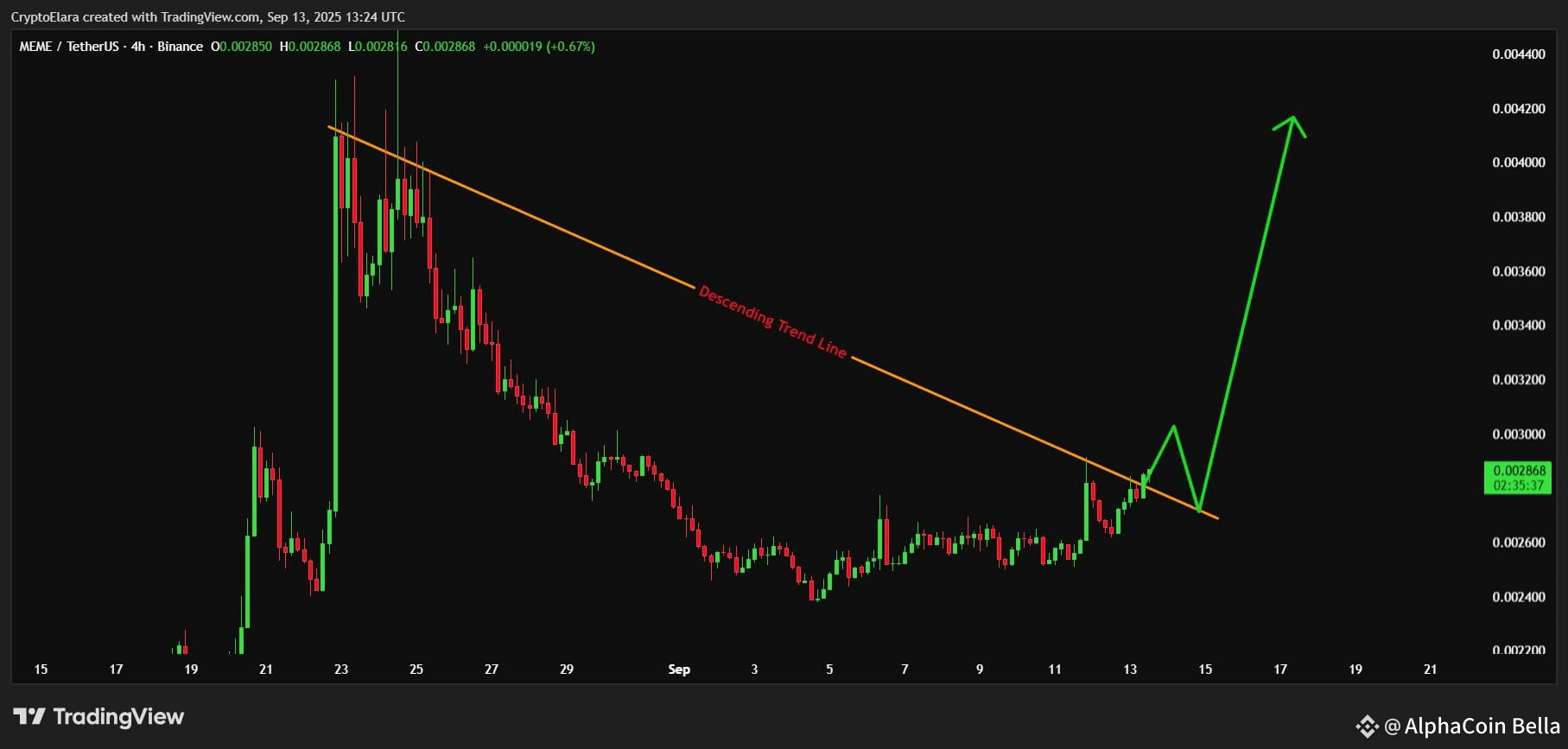$PEPE 目前市值和知名度均位列热门迷因币之列。
Coinspeaker
+2
《经济时报》
+2
近期,PEPE 的交易量和社交媒体热度激增——这通常是迷因币价格大幅波动的先兆。
Analytics Insight
+2
SwapSpace
+2
与更“稳定”的迷因币相比,PEPE 仍有很大的上涨空间,因为其价格相对较低——如果热度回升,小额投资可能带来丰厚回报。
由于 PEPE 已广为人知且交易活跃,其流动性良好——这意味着您更有可能顺利买卖,避免被套牢。
⚠️ 您必须了解的信息(风险与波动性)
PEPE 仍然是一种“纯粹的迷因币”:其价格很大程度上取决于热度、社交媒体情绪和社区兴趣,而非任何基本面。这使得其波动性极大。
如果社区兴趣消退或大户决定抛售,价格可能会迅速暴跌——因此,把握时机至关重要。和所有网络迷因币一样:只投资你能承受损失的金额。
🎯 短期策略(1-2 周至 1-2 个月)
如果你想抓住 PEPE 的潜在上涨行情:
在市场平静或重新受到关注时买入——比如在一些利好消息或社交媒体热议之后。
设定明确的盈利目标(例如 20-40% 或更高),不要贪婪。不要等待“历史新高”。
如果价格大幅上涨,考虑部分止盈——在可能下跌之前锁定收益。
#PEPE #meme #Memecoins🤑🤑 #CryptoIn401k
{spot}(PEPEUSDT)
Price Converter
- Crypto
- Fiat
USD美元
CNY人民币
JPY日元
HKD港币
THB泰铢
GBP英镑
EUR欧元
AUD澳元
TWD新台币
KRW韩元
PHP菲律宾比索
AED阿联酋迪拉姆
CAD加拿大元
MYR马来西亚林吉特
MOP澳门币
NZD新西兰元
CHF瑞士法郎
CZK捷克克朗
DKK丹麦克朗
IDR印尼卢比
LKR斯里兰卡卢比
NOK挪威克朗
QAR卡塔尔里亚尔
RUB俄罗斯卢布
SGD新加坡元
SEK瑞典克朗
VND越南盾
ZAR南非兰特
No more data












